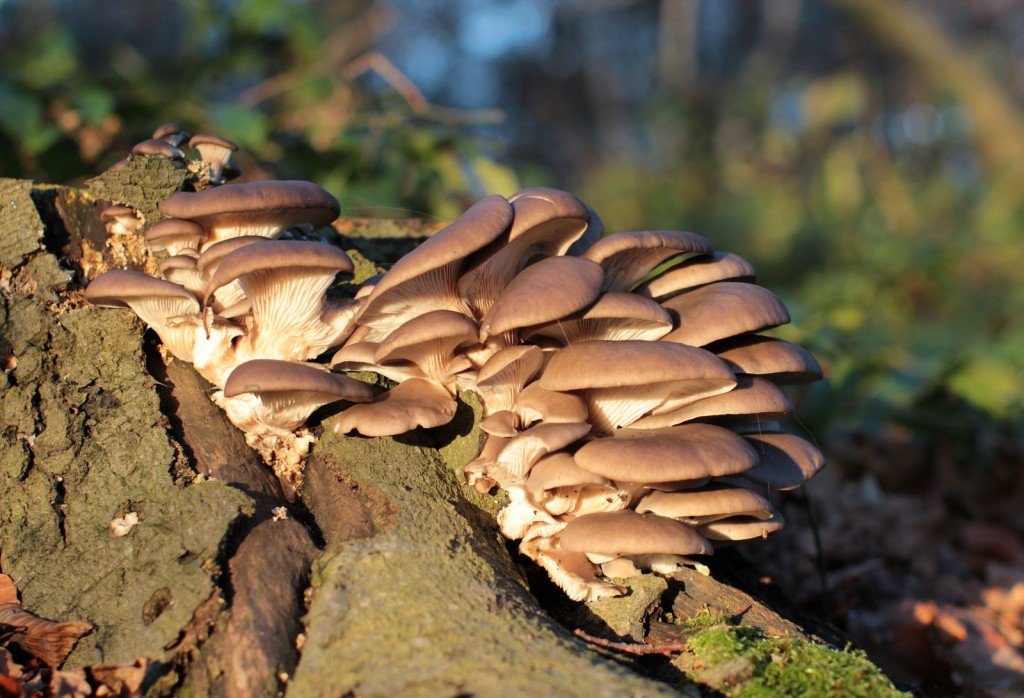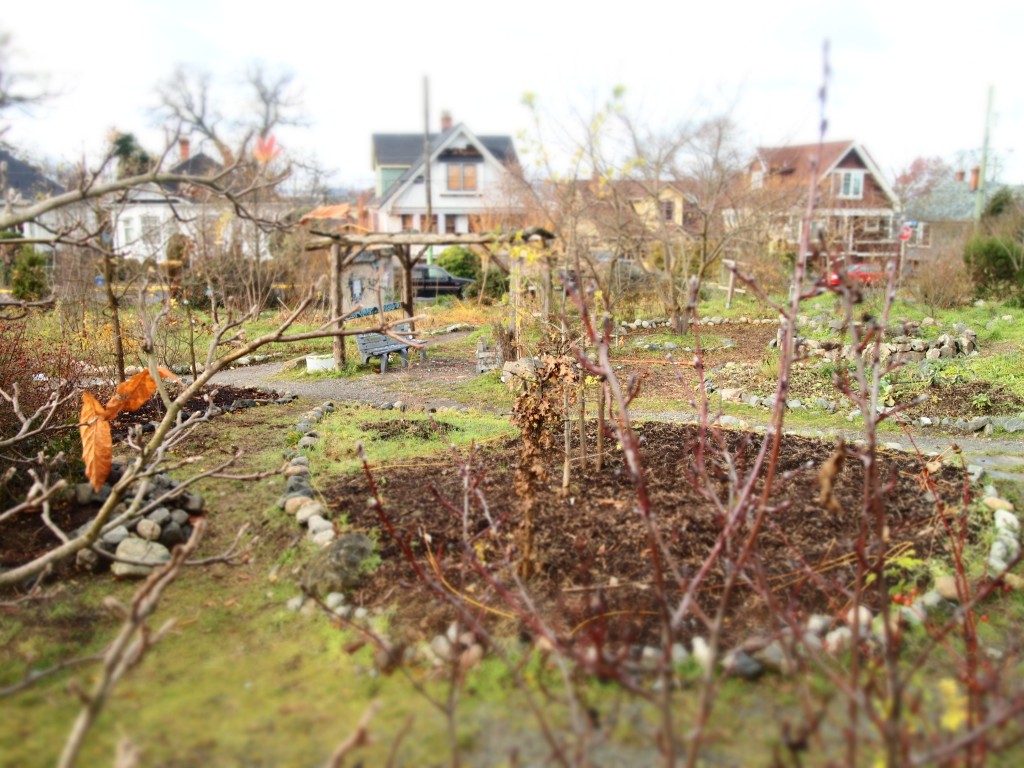Each visit to Spring Ridge Commons brings unexpected delights. As I venture inwards through the wood-chipped pathways, my taste buds buzz with anticipation and I am astounded by the depth of life I which greets me.
To the uninitiated identifying plants in such a system can be daunting. Nevertheless, with patient observation, the plants reveal themselves. The Bee Garden is particularly stunning at the moment and it appears that I am not the only one to visit the Commons with tempted taste buds. The bees are busily buzzing between beautiful buds and blossom; sweet nectar is in abundance. Observant visitors will find tasty borage, malva, mint, fennel, lovage, and milk thistle throughout the Commons. Additional colour and nourishment is provided by comfrey, calendula, rose, camas lilies, and aromatic bay leaves.
Hidden beneath a cherry tree and comfrey we find a less obvious element of this thriving system. For this month, our Plant of the Month is not a plant at all; it’s a mushroom with a taste for toxins!

Photo by Stu’s Images.
Pleurotus ostreatus, or the Pearl Oyster Mushroom certainly has an unusual palate much to our benefit. While working on site in late 2011, Dan Miller had an unfortunate accident that is common to many fossil fuel connoisseurs: he spilled some gasoline. It wasn’t much –as many of us rationalize– but the difference between Dan and many others is that he took action and quickly quarantined the soil in garbage bags. Nearly a year later to the day Dan and his Permaculture BC classmates dug a pit lined with cardboard. Within it they mixed the contaminated soil with coffee grounds and woodchips inoculated with Pearl Oyster mycelium. Digestive enzymes released by the fungi break down the toxic hydrocarbons, allowing them to be safely metabolized by other organisms. Fungi also extract and accumulate heavy metals, concentrating them in the fruiting body. For this reason, eating the mushrooms used in myco-remediation is not recommended. Nonetheless, Pearl Oyster Mushrooms are a delicacy, providing up to 30% protein, and a good source of Thiamine, Vitamin B6, Folate, Magnesium, Zinc, and Manganese, and are a very good source of Riboflavin, Niacin, Pantothenic Acid, Phosphorus, Potassium, and Copper.
 Springridge Commons.
Springridge Commons.
We are currently at the tip of the iceberg in our understanding of the power of fungi. Thriving on material that is often considered waste and with medicinal properties that appear to be limitless, their potential at the Commons and beyond is very exciting. Anyone interested in similar small-scale bio-remediation, or in growing their own edible oyster mushrooms, indoors or outdoors, is encouraged to get into contact with Permaculture BC, or Josh Wagler at 250-885-5993 (Email: jcwagler@gmail.com)
Spring Ridge Commons is always looking for volunteers. We are currently seeking people to help out with any of the following: regular watering, weeding, tall grass removal, path building, controlling invasive plants and general clean-up! If you would like to volunteer or if you have an idea for the Commons, please contact Sean Newton, at springridgecommons@gmail.com!
Any help is really appreciated!
© Copyright 2013






Leave A Comment